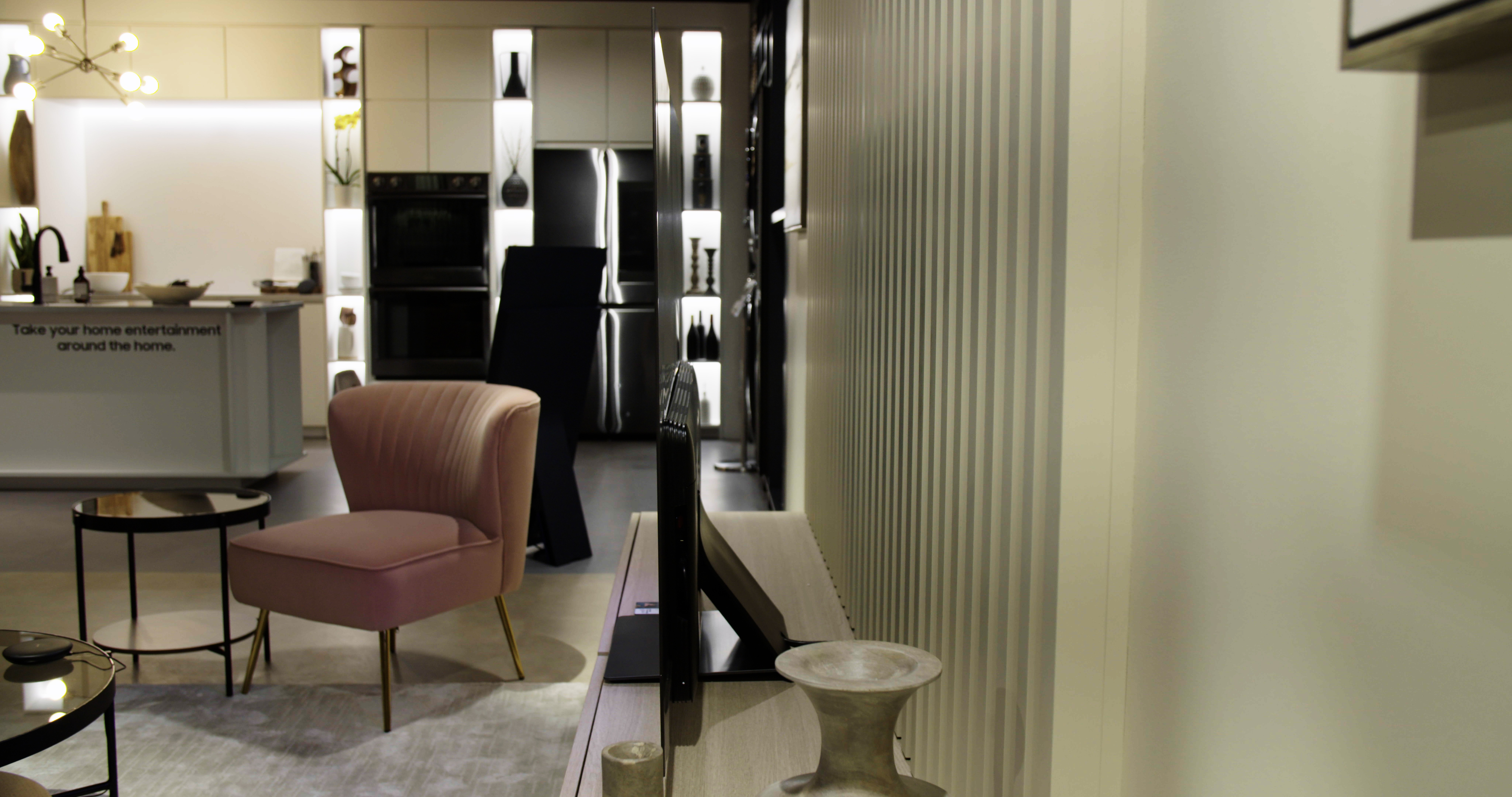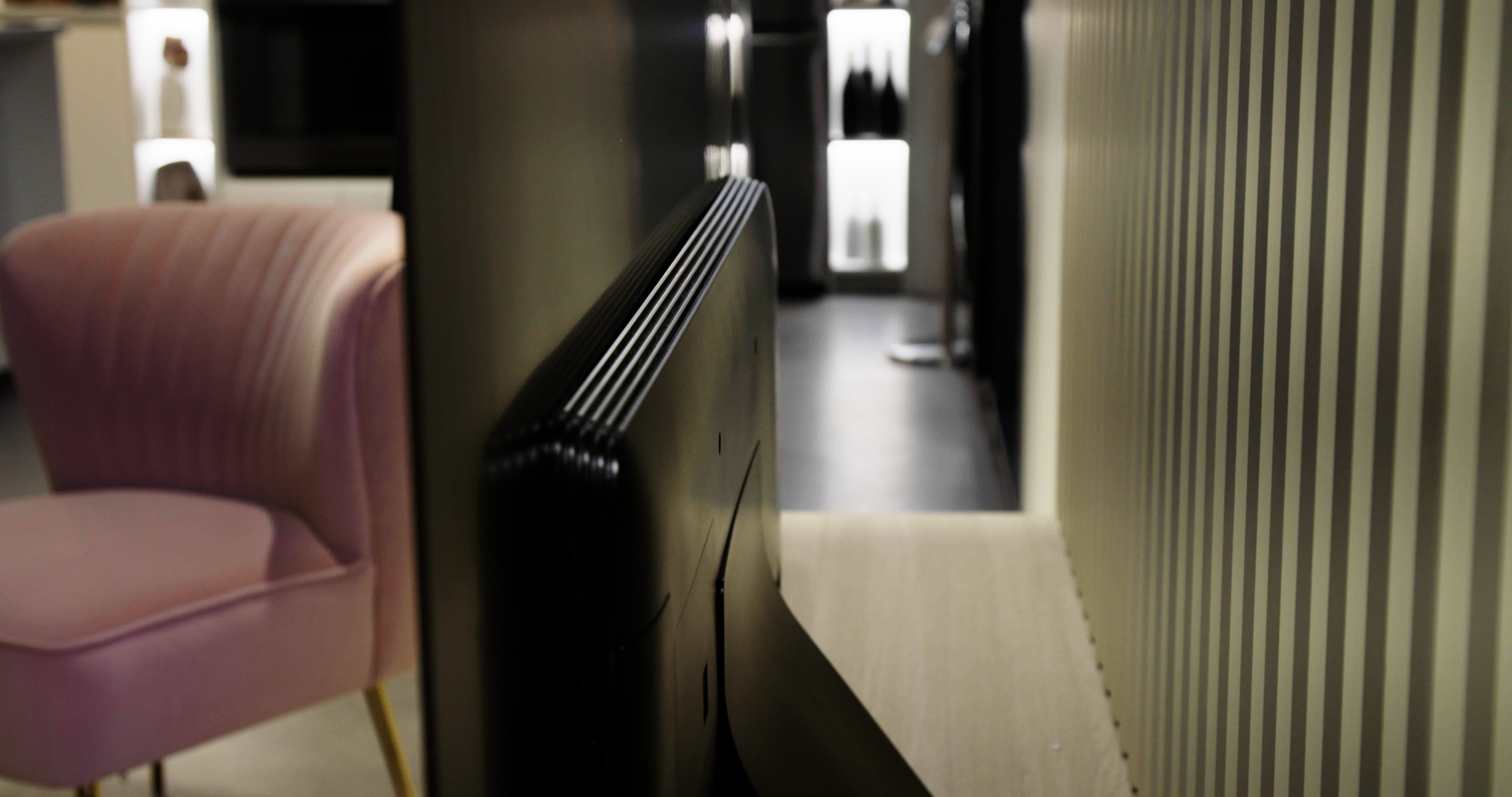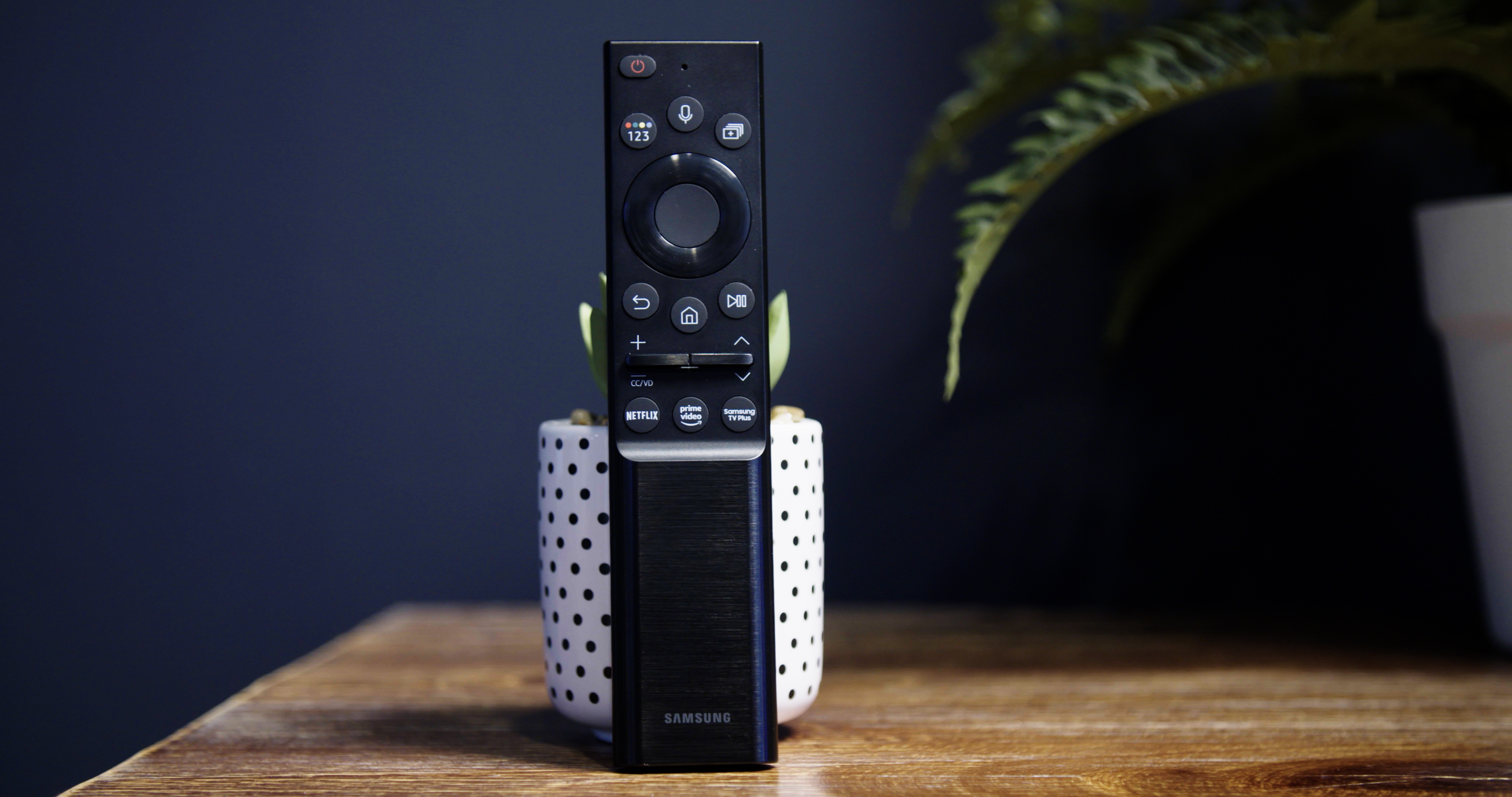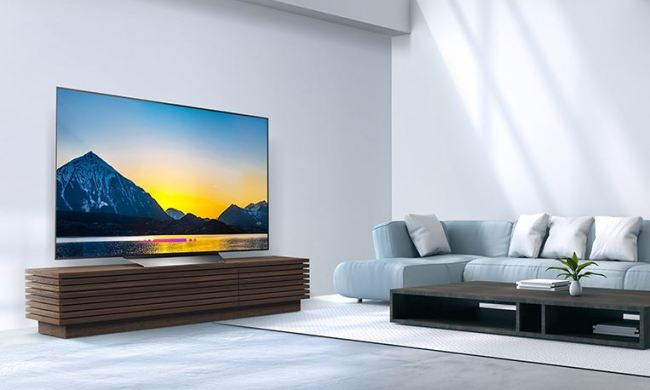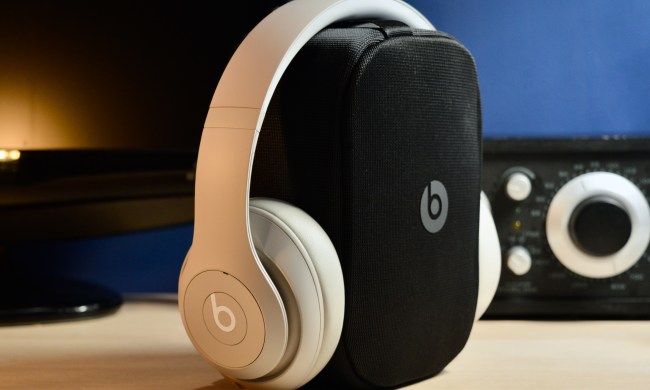Samsung has been using OLED screens in its phones for years. But for the single exception of the short-lived ES9500 in 2012, the company has refused to make an OLED TV. In fact, for the past 10 years, as LG amassed accolades for its OLED TVs, Samsung took every available opportunity (and spared no expense) to pound the table about how its LCD-based TVs were superior to OLED.
To be fair, today’s advanced micro-LED backlit, quantum dot-infused LCD TVs do hold a few advantages over OLED, but despite a decade of technological advancement, OLED’s perfect blacks and stunning contrast still remain elusive to LCD-based TVs. One can only cheat the laws of physics to a point.
So when I learned that Samsung Display had developed a new technology that paired OLED with quantum dots — commonly referred to as QD-OLED — I wondered if Samsung Electronics would use it in a TV. All that OLED bashing might be hard to walk back … or so I thought.
Turns out, Samsung isn’t worried about walking anything back. The new S95B TV, available for pre-order in 55- and 65-inch options for $2,200 and $3,000 respectively, is bluntly marketed as “Samsung OLED,” positioned as an enhancement to its already sprawling TV lineup. And while some enthusiasts think it might be the next big thing in TV, Samsung doesn’t actually consider the S95B a flagship TV. Go figure.
So, how good is this new TV and how does it look stacked up against the competition? Let’s find out. But if you’d like a little QD-OLED primer first, you can learn more about QD-OLED here.
Design
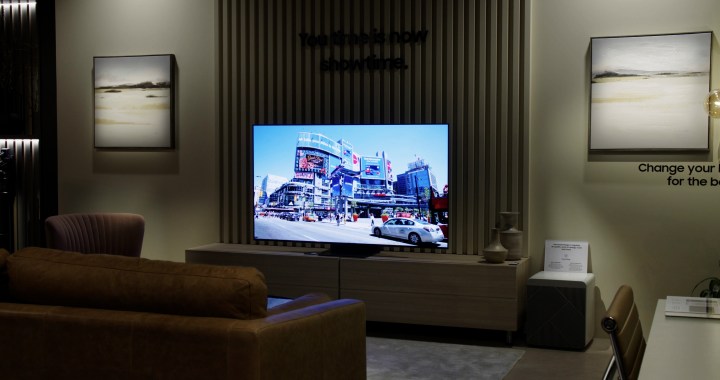
While Sony chose a rather elaborate design for its competing A95K QD-OLED TV, Samsung opted for something more conventional and practical. The S95B’s stand is elegant, comprising solid metal with a brushed finish, and has a modest footprint, easing placement on a media stand or credenza. The stand also allows ample vertical clearance for a soundbar, which can’t be said about Sony’s A95K.
The S95B is otherwise understated, with virtually invisible bezels around the screen, and an eye-catching, thin profile.
Along with the S95B comes Samsung’s latest remote control, which is outfitted with solar cells on the back for charging its built-in rechargeable battery. For those without ample sunlight in their TV room, the remote also charges wirelessly via radio waves — that includes any Wi-Fi signals beaming through the space — and via USB-C.
Features
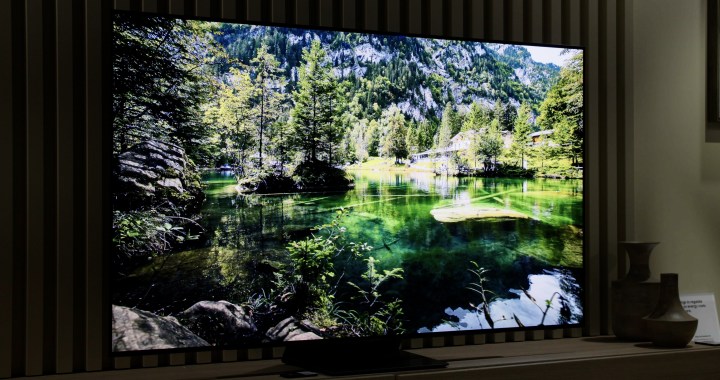
The S95 is loaded with far too many features to list here, but there are a few that set Samsung’s premium sets — including the S95B — apart this year.
TV geeks will be thrilled to know that the S95B packs four HDMI 2.1 inputs, all capable of 4K at 120Hz, HDR, variable refresh rate (VRR) with FreeSync Premium, and Auto Low Latency Mode (ALLM). One of the HDMI inputs is designated as an eARC port, but one could conceivably connect a PlayStation 5, Xbox Series X, gaming PC, and soundbar or A/V receiver all at once.
For those who believe cloud gaming is the future, it is expected that Samsung’s forthcoming gaming hub will support Nvidia’s GeForce Now, Google’s Stadia, and Microsoft’s Xbox Cloud Gaming. At the time I published this review, there was no official word on whether Samsung will support Sony’s recently revamped PlayStation Plus, but if history is any indication, it probably will, and soon.
Another gaming’ friendly aspect of Samsung’s gaming hub is a “game bar” which places key picture quality adjustments and performance metrics right at the bottom of the screen with just a click.
If it hasn’t become clear already, Samsung is going all-in on gaming with its premium TV lineup. With that said, the S95B maxes at out 120Hz refresh rate, while a select few of its Neo QLED TVs now support up to 144Hz.

One feature that remains missing for Samsung TVs: Dolby Vision HDR. The S95B does, however, support HDR10, HDR10+, and HLG.
Other clever, user-focused features include a new Picture-in-Picture mode for watching multiple sources of content at once and Samsung’s tap-to-share feature which can instantly mirror content from a compatible Android smartphone.
On the audio features front, the S95B supports Samsung’s Object Tracking Sound, which uses multiple built-in speakers to make it seems as if sound is coming from objects’ locations on the screen. The S95B also supports Samsung’s Q-Symphony Sound, which operates the TV’s speaker system in concert with a Samsung soundbar. Rounding out the audio feature list is a wireless audio connection for Samsung soundbars that supports Dolby Atmos via Dolby Digital Plus. By using Wi-Fi, the audio connection is fast enough to eliminate latency, though a built-in lip-sync function usually abates any audio delay issues anyway.
Rounding out my list of the most notable features is Samsung’s Ambient Mode, which allows users to take a picture of their TV among its surroundings, and use that image information to create wallpaper that mimics the TV’s surroundings. This way, rather than exist as a black hole on the wall, the TV can pull off a chameleon-like effect and better blend into the room. In my experience, this feature works best when the wall on which the TV is mounted features colors other than white or off-white, and textures that are easily visible from afar.
Unboxing and setup

I’ll fill in this section with my unboxing experience once I have received a review sample and performed a proper evaluation of the S95B, but for now, there are a couple of notable set-up features worth noting.
Samsung’s Smart Things app allows users to perform most of their TV setup using a smartphone. This holds the promise of speeding up the process by logging into Wi-Fi access points and streaming apps using credentials stored on the phone. I’ve yet to see this feature work out with streaming apps as intended, but perhaps 2022 is the year I’ll be pleasantly surprised. Otherwise, I find a manual setup using the TV’s remote control and on-screen interface to be a bit faster.
If Samsung’s EZCAL works properly, it could be a game-changer.
Samsung also has a picture settings app available called EZCAL, currently available for select Samsung Galaxy phone users only, though app availability is expected to expand soon. The app promises to adjust a TV’s picture settings to meet established picture quality standards, like a D65 white point and accurate DCI P-3 color coverage. I haven’t had a chance to test this app’s results against my own calibration settings and results, but if Samsung can get this app to work properly, it could be a game-changer for users who want the most accurate picture quality possible without having to spend money on a professional calibrator. I eagerly look forward to updating this section after I have had a chance to test several 2022 Samsung TVs.
Picture quality

To be clear, I was only able to experience the S95B at a Samsung event in New York City, where the content playing was a pre-recorded loop on a USB stick and could not be changed. I couldn’t adjust the picture settings on the TV, either, so the demo footage I saw — while very familiar to me — was locked in the TV’s Standard picture preset, with a color temperature a little bit colder than I would have chosen for a proper evaluation.
With that said, I have had extensive experience testing Sony’s A95K QD-OLED using the same panel technology, so I know what the technology is capable of. Ultimately, picture quality differences will be directly related to picture processing preferences exercised by Samsung.
From what I was able to view, Samsung has done a fantastic job with its processing on its new OLED display. Black levels, as expected, were perfect. I wasn’t able to view much in the way of low-luminance content, but what little I did see indicates that Samsung has managed to preserve a respectable amount of shadow detail in near-black scenes.
Black levels, as expected, were perfect.
On the opposite side of the spectrum, it appeared to my eyes that the S95B was able to hit around 1000 nits in peak highlights, which is in keeping with the other QD-OLED panels I’ve tested, including the aforementioned Sony A95K TV and Dell’s Alienware 34 QD-OLED monitor. Average picture level for the HDR content that was on display was sufficiently bright for the moderated illuminated display setting in which the S95B was set. Historically, Samsung has programmed its TVs to perform just a touch brighter than the established electro-optical transfer function (EOTF) standard, which, while not technically accurate, results in a vivid picture that I’ve found most folks prefer.

Colors looked quite vivid and well-saturated to my naked eye, though I’ll be curious to see how Samsung’s processing handles keeping colors in balance when they are shone at their brightest.
The footage I viewed gave me little to no opportunity to gauge the S95B’s motion processing, though if Samsung’s recent high-end TVs are any indication, motion will be judder-free when viewing cinematic content. What remains to be seen is how well the TV does at mitigating a flashing effect that can be seen in slow panning scenes when high-contrast images are displayed.
The S95B could end up being one of the hottest tickets in 2022.
I’m also looking forward to testing how well the S95B upscales and digitally scrubs low-resolution streaming content, such as that found on Samsung TV Plus, an aggregation of free streaming TV options (like Pluto TV) that are usually of low resolution and limited bit-depth.
Audio performance
Unfortunately, I was not able to evaluate the S95B’s sound quality at all. What I can say is that the TV does not feature the same transducers affixed to the screen which makes the screen itself a speaker — technology that Sony has employed for the A95K. However, with four separate drivers placed on the back of the TV and Samsung’s Object Tracking Sound processing, I am optimistic that the S95B will sound solid. Still, a TV of this quality is deserving of at least a soundbar, if possible.
The takeaway
At first glance, the S95B appears to be an extremely competitive high-end TV. That it is priced at $2,300 for the 55-inch model and $3,000 for the 65-inch model puts it in close competition with LG’s premium G2 Gallery Series OLED TVs, and undercuts its closest technical competition, the Sony A95K, by as much as $1,000. This means that the S95B could end up being one of the hottest tickets on the TV market this year — it’s certainly one of the best TVs of 2022
To be certain, the competition among high-end TVs in 2022 is going to be extremely tight. I look forward to digging deeper into the Samsung S95B’s performance over the coming weeks and publishing a full review shortly thereafter.

